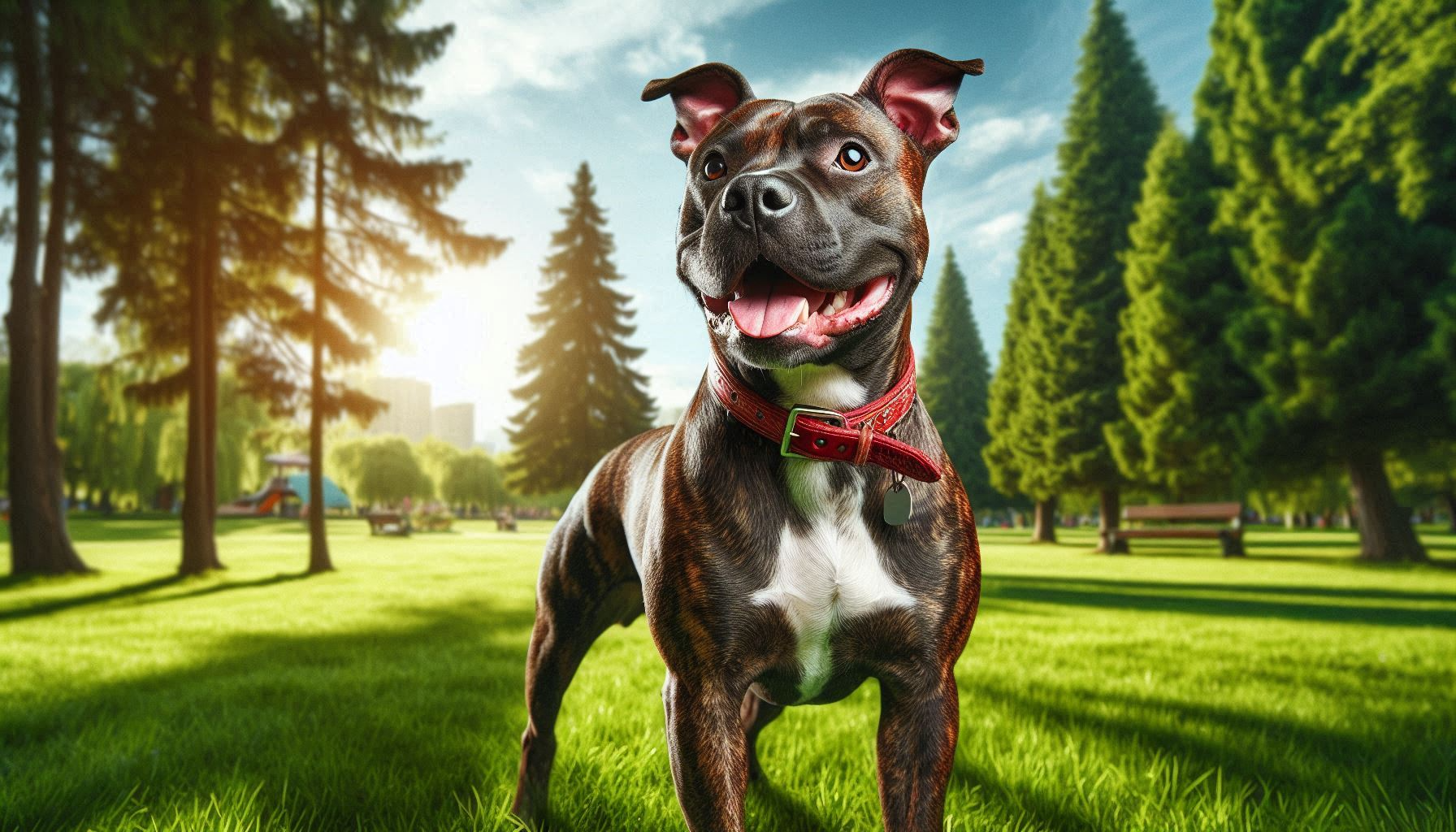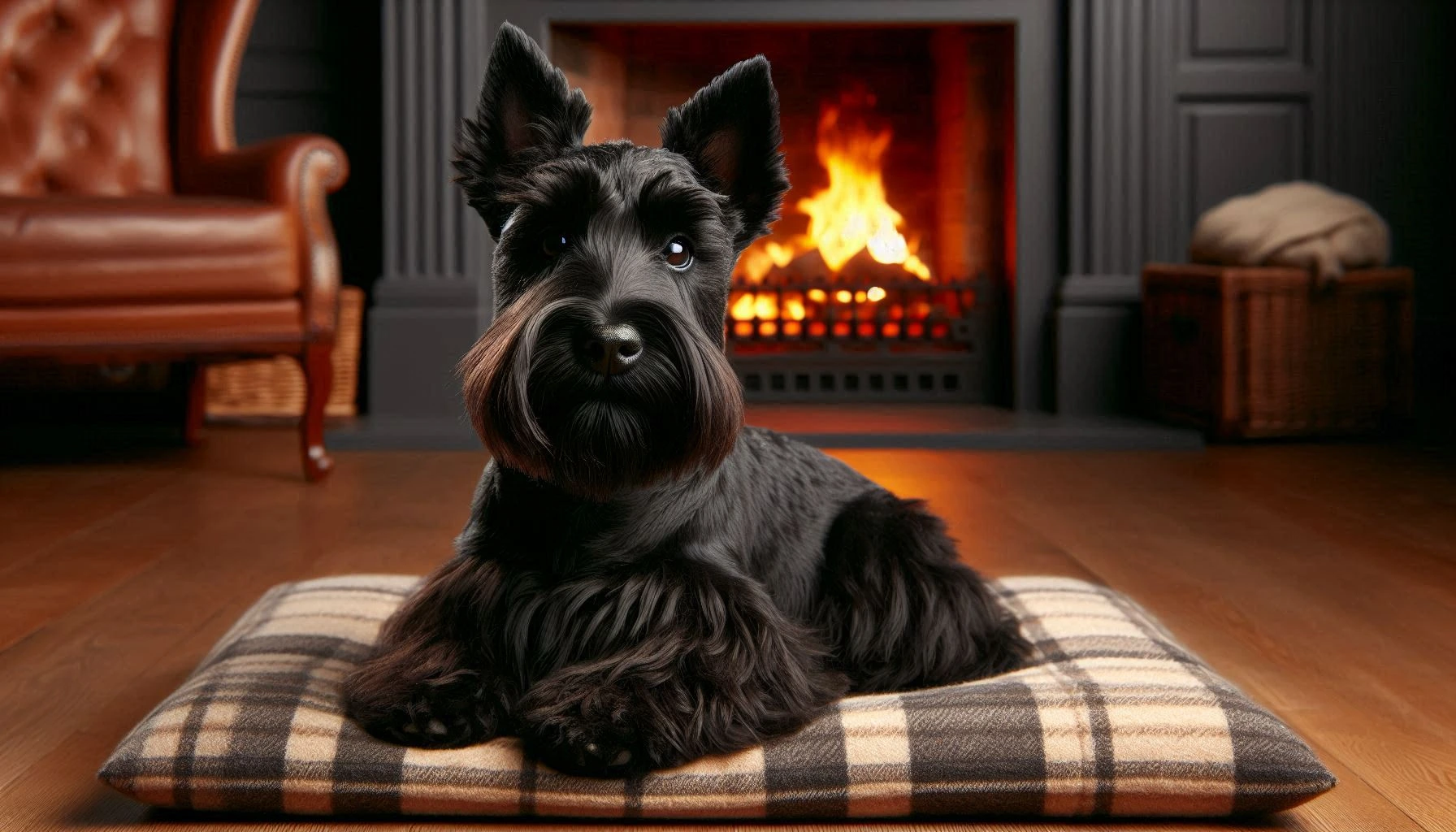Table of Contents
Skye Terrier Dog Breed
The Skye Terrier is a unique and charming dog breed that has captured the hearts of dog enthusiasts worldwide. Known for its long, flowing coat and endearing personality, this small yet sturdy breed has a lot to offer. Whether you’re looking for a loyal companion or a feisty little watchdog, the Skye Terrier may be the perfect addition to your family. In this article, we’ll delve into the history, characteristics, and care needs of this fascinating breed to help you understand why it remains popular among dog lovers.
History and Origin
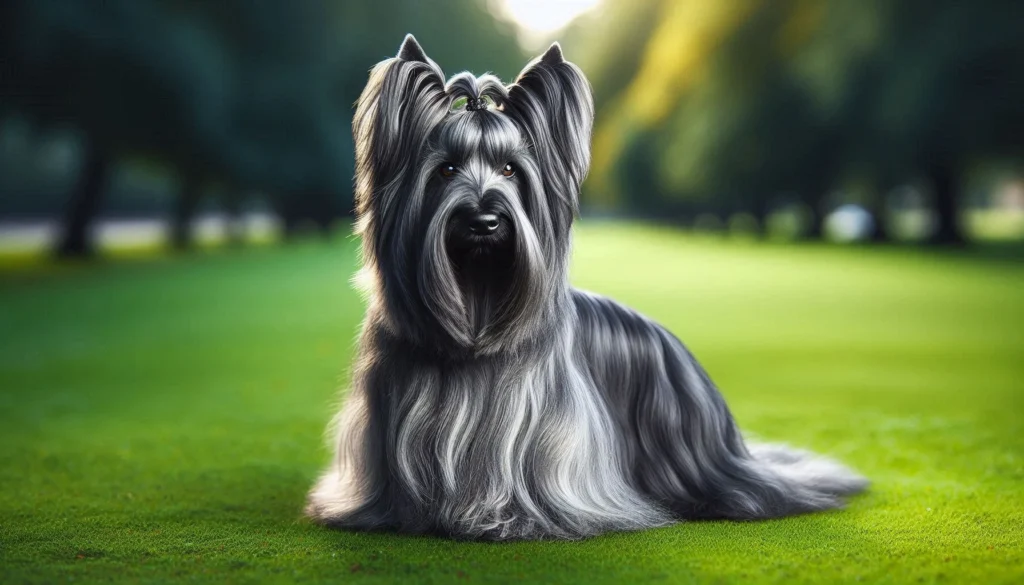
The Skye Terrier hails from Scotland, more specifically the Isle of Skye, from which it gets its name. This breed is one of the oldest terrier breeds, with a history dating back to the 16th century. Originally bred to hunt and eliminate vermin such as foxes and badgers, the Skye Terrier was highly valued for its tenacity, courage, and agility. These dogs were often found in the homes of Scottish nobility and even caught the attention of Queen Victoria, who became an avid admirer and owner of the breed, further boosting its popularity.
One of the most famous Skye Terriers in history is Greyfriars Bobby, who became renowned for his loyalty by guarding his owner’s grave for 14 years. This story epitomizes the breed’s unwavering devotion and has become a symbol of loyalty in popular culture.
Physical Characteristics
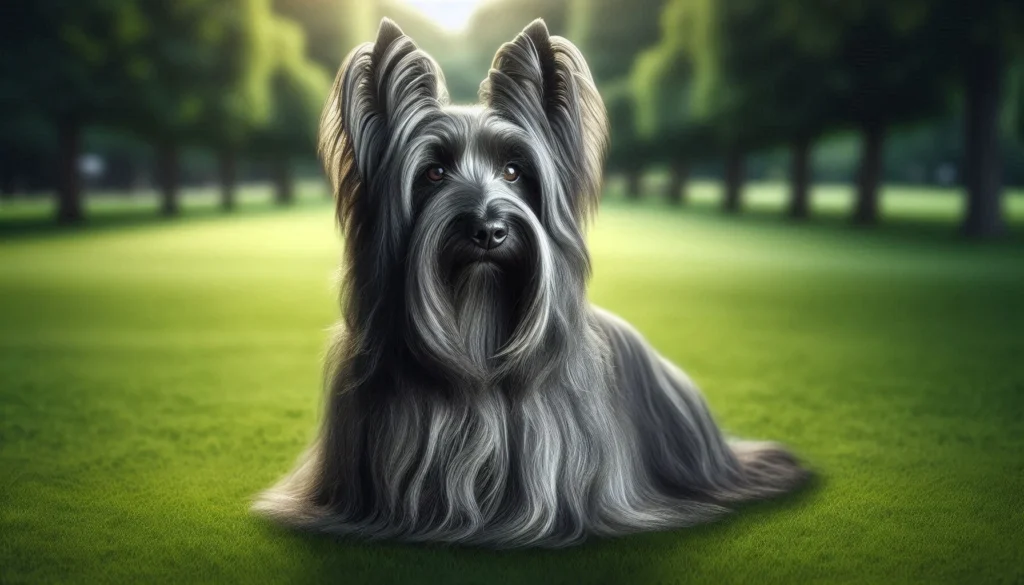
The Skye Terrier is a small to medium-sized dog, standing about 9 to 10 inches tall at the shoulder and weighing between 18 to 25 pounds. Despite their modest size, they are robust and muscular, with a body that is twice as long as it is tall, giving them a distinct and elegant appearance.
Coat and Colors
One of the most distinctive features of the Skye Terrier is its luxurious double coat. The outer coat is long, straight, and flowing, often reaching the ground, while the undercoat is soft and dense, providing insulation. Skye Terriers come in a variety of colors, including black, blue, gray, silver, fawn, and cream, often with darker points on the ears, muzzle, and tail tip.
Distinctive Features
The breed’s head is long and powerful, with a slight stop and a strong muzzle. Their ears can be either erect or dropped, both of which are accepted in the breed standard. The eyes are medium-sized, dark, and expressive, conveying an intelligent and alert expression. Their tail is feathered and carried low, adding to their overall elegant demeanor.
Temperament and Personality

Skye Terriers are known for their loyal, affectionate, and sometimes independent nature. They form strong bonds with their families and are known to be very protective of their loved ones. While they can be somewhat reserved with strangers, they are not shy and will quickly warm up to new people once they feel comfortable.
Interaction with People and Children
Skye Terriers can be wonderful companions for families, though they may be better suited to households with older children who understand how to handle dogs gently. They are typically good with children but prefer calm and respectful interactions. Due to their loyal nature, they may become overly protective, so early socialization is crucial.
Interaction with Other Animals
While Skye Terriers were originally bred to hunt, they can get along with other pets, especially if raised with them from a young age. However, they may still retain some of their hunting instincts, so introductions to smaller pets should be done cautiously. They tend to be more assertive with other dogs, so supervision during playtime is recommended.
Health and Lifespan
Skye Terriers are generally healthy dogs with a lifespan of 12 to 14 years. However, like all breeds, they are prone to certain health issues that potential owners should be aware of.
Common Health Issues
- Hip Dysplasia: A genetic condition that affects the hip joint, causing discomfort and mobility issues. Regular vet check-ups and maintaining a healthy weight can help manage this condition.
- Allergies: Skye Terriers can be prone to skin allergies, which may require a special diet or medication.
- Eye Problems: Conditions like glaucoma and lens luxation can occur, so regular eye examinations are important.
Tips for Keeping Your Skye Terrier Healthy
- Regular Exercise: Although small, Skye Terriers are active dogs that need daily walks and playtime to keep them mentally and physically fit.
- Balanced Diet: Providing a high-quality diet tailored to their age, weight, and activity level is essential for maintaining their health.
- Routine Vet Visits: Regular veterinary care, including vaccinations, dental check-ups, and health screenings, is crucial for early detection and prevention of health issues.
Care and Grooming

Caring for a Skye Terrier involves regular grooming, exercise, and attention to their specific needs.
Grooming Needs
The Skye Terrier’s long coat requires diligent grooming to prevent matting and tangling. Brushing several times a week is recommended, along with regular baths to keep their coat clean and healthy. Trimming the hair around the eyes and ears can help prevent irritation and infections. Some owners opt to trim their Skye Terrier’s coat shorter for easier maintenance, though this may alter the breed’s traditional look.
Exercise Requirements
Despite their small size, Skye Terriers are energetic and require regular exercise. Daily walks and play sessions in a secure area will help them burn off energy and stay mentally stimulated. They also enjoy activities like obedience training and agility, which can provide both physical exercise and mental enrichment.
Dietary Recommendations
Feeding your Skye Terrier a balanced diet that meets their nutritional needs is essential. High-quality commercial dog food, or a well-prepared homemade diet, should be rich in protein, healthy fats, and essential vitamins and minerals. Be mindful of portion sizes to prevent obesity, a common issue in smaller breeds.
Training and Socialization
Training a Skye Terrier can be a rewarding experience, but it requires patience and consistency.
Training Tips
Skye Terriers are intelligent and eager to please, making them relatively easy to train. However, they can also be independent and stubborn, so early training is important. Positive reinforcement techniques, such as treats, praise, and play, work best. It’s important to start training as early as possible to establish good behavior and obedience.
Socialization
Early socialization is key to preventing behavioral issues in Skye Terriers. Expose your dog to a variety of people, places, and situations during puppyhood to help them grow into a well-adjusted adult. Socializing with other dogs is also important, as it helps them learn how to interact appropriately with their canine counterparts.
Suitability as a Family Pet
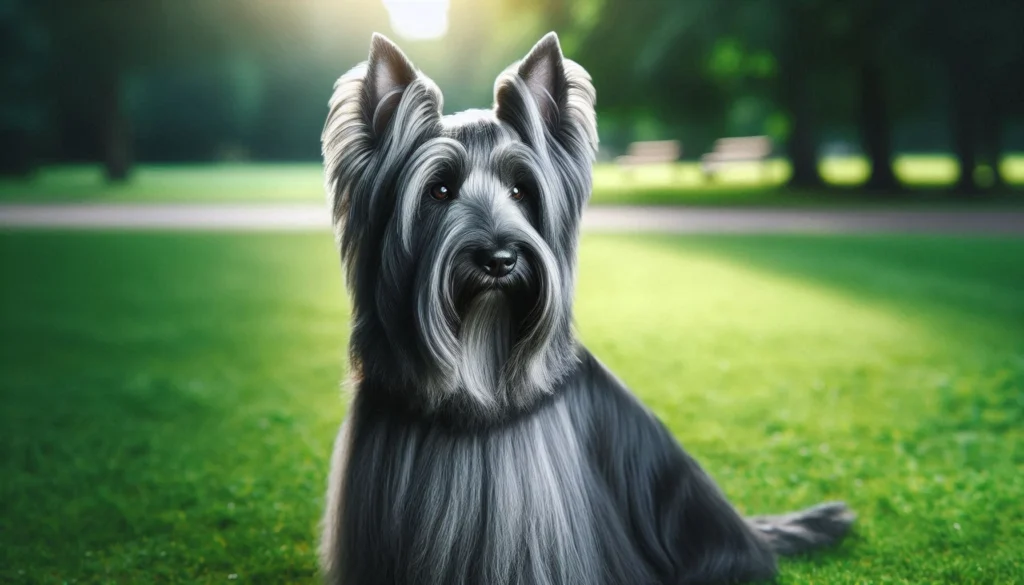
Skye Terriers can make excellent family pets, especially in homes where they are the center of attention. They thrive in environments where they can form close bonds with their owners and participate in family activities. However, they may not be the best choice for very young children or households with multiple pets, especially smaller animals.
Living Environment Considerations
Skye Terriers are adaptable and can live in a variety of environments, from apartments to larger homes with yards. However, they are best suited to living indoors, where they can be close to their families. A secure, fenced yard is ideal for outdoor play, but they should not be left outside unsupervised for extended periods due to their hunting instincts.
Energy Levels
While they are not overly hyperactive, Skye Terriers have a moderate energy level and enjoy regular exercise and playtime. They can adapt to their owner’s activity levels, making them a good fit for both active and more laid-back households.
Fun Facts and Trivia
- Royal Approval: Queen Victoria was so fond of Skye Terriers that she owned several throughout her life, helping to popularize the breed in the 19th century.
- Loyal Legends: The story of Greyfriars Bobby, the Skye Terrier who guarded his master’s grave for 14 years, is a testament to the breed’s loyalty and has become a symbol of fidelity.
- Ears Optional: Skye Terriers can have either erect or dropped ears, and both types are considered equally desirable within the breed standard.
Similar Dog Breeds

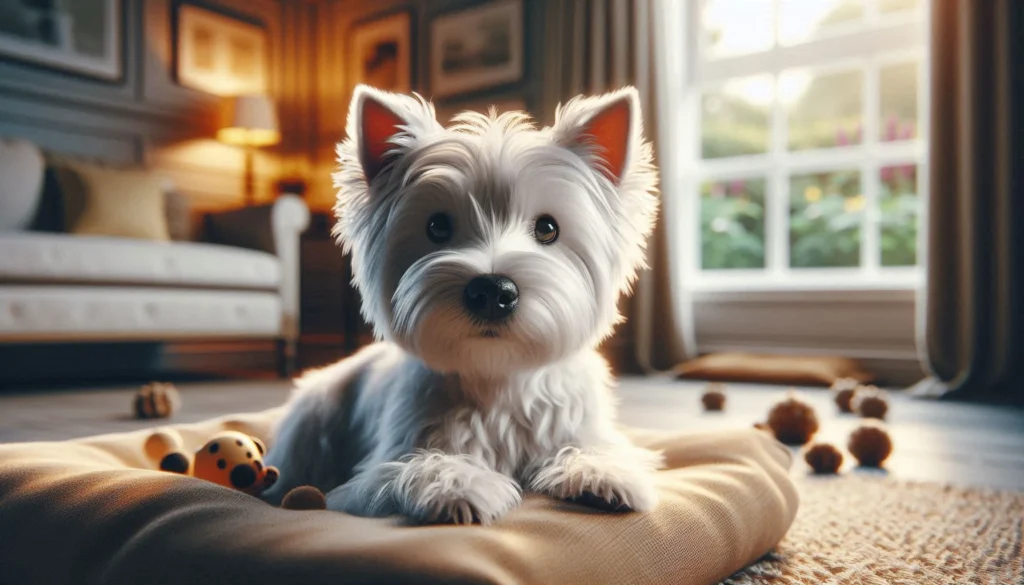
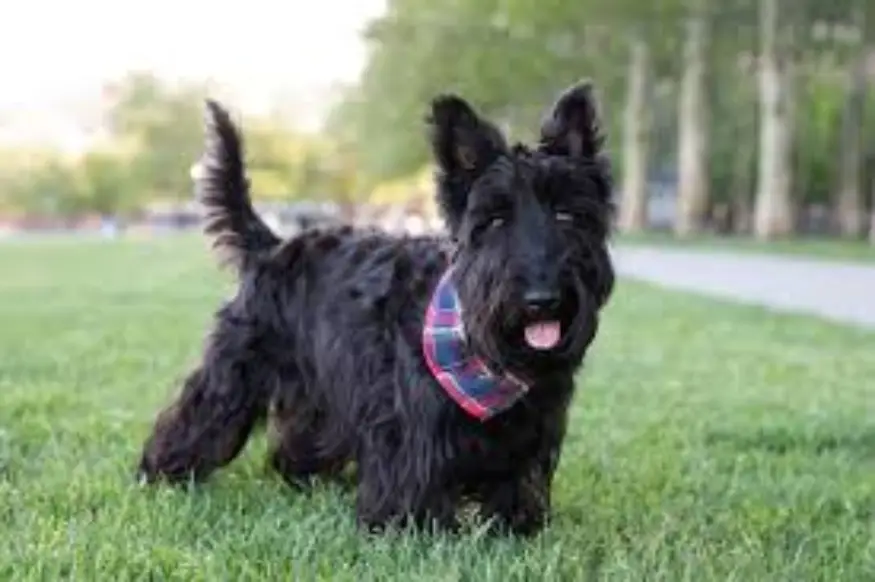
- Cairn Terrier: Also hailing from Scotland, the Cairn Terrier is similar in size and temperament to the Skye Terrier. They are lively, hardy, and have a scruffy, weather-resistant coat that requires regular grooming.
- West Highland White Terrier: Commonly known as the Westie, this breed shares the Skye Terrier’s Scottish roots. Westies are known for their playful, friendly nature and their distinctive white coat.
- Scottish Terrier: The Scottish Terrier, or Scottie, is another small terrier breed from Scotland. They are independent, confident, and loyal, with a wiry coat that requires regular grooming.
Conclusion
The Skye Terrier is a breed full of character, loyalty, and charm. With their distinctive appearance and affectionate nature, they make wonderful companions for the right owner. However, they require a dedicated owner who can meet their grooming, exercise, and training needs. If you’re looking for a dog that’s as loyal as it is unique, the Skye Terrier may be the perfect match for you.
FAQ
Is the Skye Terrier a dangerous dog?
No, the Skye Terrier is not considered a dangerous dog. They are typically friendly and loyal to their families, though they can be wary of strangers. With proper training and socialization, they make excellent companions and are not prone to aggressive behavior.
Is the Skye Terrier a good guard dog?
While the Skye Terrier is alert and protective, they are not typically used as guard dogs. They will bark to alert their owners of strangers or unusual activity, making them good watchdogs, but their small size and friendly nature mean they are better suited as companion animals than as traditional guard dogs.
